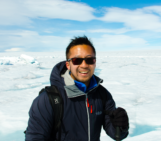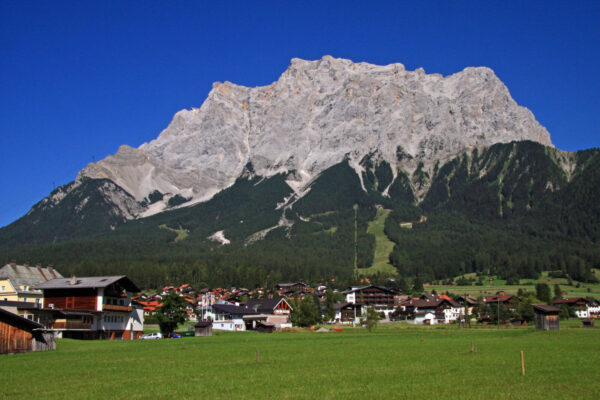
This miniseries features the tradition of ‘PhD hat’ making in German research institutes and universities. For those of you unfamiliar with this idea (as I once was), this is one of the final milestones a graduate student has before they are officially a “Dr.”. Upon the successful defense of a thesis, the labmates of the PhD student craft a graduation hat from a mishmash of scrap cardboard and memorabilia. Hours of work go into these beloved pieces, and you can often find these hand-made creations fondly perched on a shelf in faculty’s offices.
Here, we talk with several researchers who work within the cryosphere sciences about the stories that shaped their PhD hats. In the last posts, we ‘herd’ about Torben’s arctic herbivore hat, took a tour of the Nitrogen cycle with Tina through her microbiology hat, explored the Siberian alaas landscape through time with Izabella and Ramesh’s hats, and cored the ice sheets of both poles with Dorothea and her hat. This month we hear from a researcher who takes cryospheric research to new heights in alpine landscapes.
For the fifth, and final, post in this miniseries we end on a high note with an expert in alpine permafrost and rock dynamics. Prof. Dr. Michael Krautblatter (he / him) received his PhD in geography from the University of Bonn in 2009. In his thesis, “Detection and quantification of permafrost change in alpine rock walls and implications for rock instability”, he used a combination of ‘blood, sweat and tears’ as well as the power of mathematics to advance our understanding of the ever-changing alpine cryosphere.
Today, he continues pursuing the unknowns of the alpine cryosphere as a professor at Technical University of Munich (TUM). In addition to leading an active research group, he serves as the Chair of Landslide Research and leads various initiatives connecting researchers studying the European Alps, such as the Center for Alpine Hazards and Risks at the TUM. Though his work takes him to mountain ranges across the globe, he has one workplace that he has consistently visited since his time as a PhD student : Germany’s tallest mountain – the Zugspitze (Fig. 1). With the infrastructure provided by the research station Schneefernerhaus, it’s not just an ideal field site for his permafrost research, but also made for an eye-catching centerpiece to his PhD Hat (Fig. 2)!
Thanks for taking the time to tell us about your PhD Hat! Can you tell us about what your original thesis research question was? Did it change?
The original question was more geophysical. I asked, ‘how can we detect permafrost [in alpine rock walls]?’ To answer this, I had the idea to use electrical resistivity tomography (ERT) and seismic tomography to do it.
ERT uses permanently installed electrodes strategically placed around a study site. To the untrained eye, an ERT survey site simply looks like a series of well-labeled nails haphazardly hammered into a rock wall, as if a lazy roommate meant to hang up dozens of framed photos but never quite got around to it…
By running an electrical current through these electrodes, researchers can calculate how well the material resists (or conducts) the current. This calculation can reveal information about the material, such as how much water the rocks contain. Michael was the first to use this method to explore the permafrost within rock walls to try and non-invasively estimate the temperature of the center of the mountains.
The more I worked on this question, the more mechanical it became. We found out that the reason behind why and how rocks become unstable [when temperatures increase, and permafrost thaws] is something that’s not yet solved. So, more and more, this mechanical question also became the topic of my PhD thesis.
At the beginning of my thesis work, my supervisor was not entirely convinced that these rock faces were the most interesting topic. At the time, people [studying alpine environments] were mostly working with rock glaciers where there’s a lot of ice. However, in the rock faces within our study sites, there was only 3 or 4% ice content. In my thesis I explained that this 3 or 4% of ice is just totally essential for the stability [of the rocky slopes].
What were the major findings from your PhD thesis work?
One of the major findings is that we found that we could use electrical resistivity topography to ‘look’ inside rocks and see how much permafrost is there. We could even measure, or at least approach an estimate, of the temperature inside.
The second big finding is that the destabilization of permafrost rocks is something that we can mechanically express, so we can find rock and ice mechanical equations that offer some explanation as to how and why permafrost rocks become unstable when it gets warm.
Permafrost is any material below the surface that stays frozen for at least two consecutive years. This also includes rocks at freezing temperatures. Ice-rich permafrost can act as a sort of binding agent between rocks to hold them in place, but in his thesis Michael found that rocks can also react to shear stresses differently when they are at different temperatures and lead to cascading effects of rock face instabilities as these alpine habitats are rapidly warming.
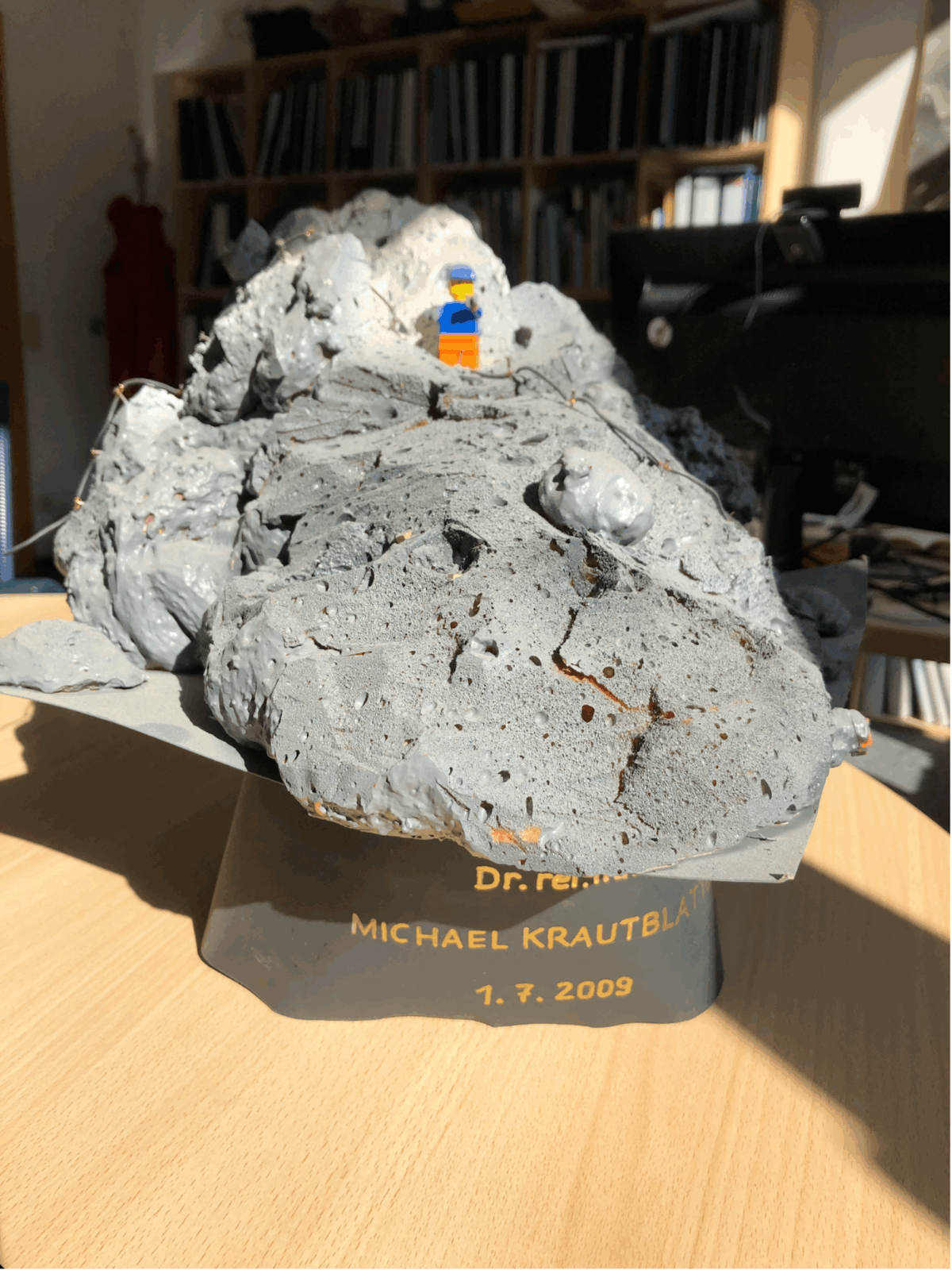
Figure 2: The same mountain as Figure 1, but from the point of view of the students who worked with Michael throughout his PhD time. [Credit: Michael Krautblatter]
Can you give us a tour of your PhD Hat?
The Zugspitze
So the hat shows the Zugspitze, and the large scarp of the rock slope failure that happened there 4,000 years ago (Fig. 2). And my peers made a really nice ERT in there, so you can find electrodes in the rock. Also, the rocks themselves are mobile!
ERT
The electric resistivity tomograph was included because that turned out to be one of the major things that I worked with during my PhD. It took me three or four years to really get this method operating reliably in rocks. There’s so much of my blood, sweat, and tears that went into these first ERTs that didn’t work. There was one time that we had carried up enough cable and equipment for an entire month on the mountain and when we got there we found out the cable was out of order…
How did it feel to hand in the PhD thesis and finish this part of your career?
I remember the exact day when my time as a PhD student ended, because I was leading an excursion to Mexico with 25 people the very next morning and was just totally exhausted from all the organization and planning involved in that.
When I was on my way to the University office to hand in the thesis – we were still submitting our printed thesis manually at the time – a part of my right shoe fell off. I remember thinking that it represented exactly how I felt in the moment!
For those who just joined a lab group in Germany, or maybe want to bring this to their own lab group: What is something essential to include in a labmate’s PhD hat?
The PhD hat is a big gift to give to a PhD candidate – I keep mine on the cupboard in my office. I see it every day. Even though these were not-so-easy times, the hat can also remind you of the friends you met during the thesis. It shows that other people took the effort to make it for you. And you took an effort to make it for other people.
I see all of that when I look at the PhD hats. So I think if they take a little bit of the emotional side of the PhD memories, and the toughest thing they’ve done in your PhD, then the PhD candidate will appreciate it because they can see their time over the last few years reflected in this hat.
Thanks for your time Michael, and for the tour of your PhD hat!
To the reader, though this is the last post in this miniseries of ‘Cryo Caps’ it doesn’t have to be the last. If there’s a tradition or activity your lab group does to celebrate a graduation, write about it! Often, these inter-lab traditions highlight the teamwork and friendships that support academic research. Curiosity and the pursuit of knowledge can create a competitive atmosphere at times, but it can also bring out the best in all of us too.
Further reading
For more on this topic, check out some of these recent publications from the Landslide Research group at TUM:
- How does water flow through mountains? A paper presenting a model of water dynamics using a decade of measurements from the Zugspitze mountain
- How warm does it have to be for rocks to roll? Here, researchers discover a new type of rock slope failure that results from warming permafrost
- The lab group’s methods extend beyond the cryosphere! In this preprint the researchers use the same non-invasive methods of measuring rockslope stability in mountains to assess rockfall hazard in ancient mortuary temples of Luxor, Egypt.
- If you haven’t read them yet, check out the other episodes of this miniseries “Cryosphere Caps: PhD hats and the researchers that wear them”
- Episode 1: The arctic herbivore hat of Torben Windirsch
- Episode 2: The microbial ecology hat of Tina Sanders
- Episode 3: The alaas landscape hats of Izabella and Ramesh
- Episode 4: The firn hat of Dorothea Moser
Edited by Lina Madaj

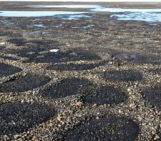
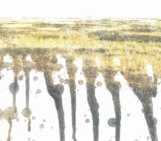
![For Dummies – How do wildfires impact permafrost? [OR.. a story of ice and fire]](https://blogs.egu.eu/divisions/cr/files/2019/10/DJI01011-161x141.jpg)
